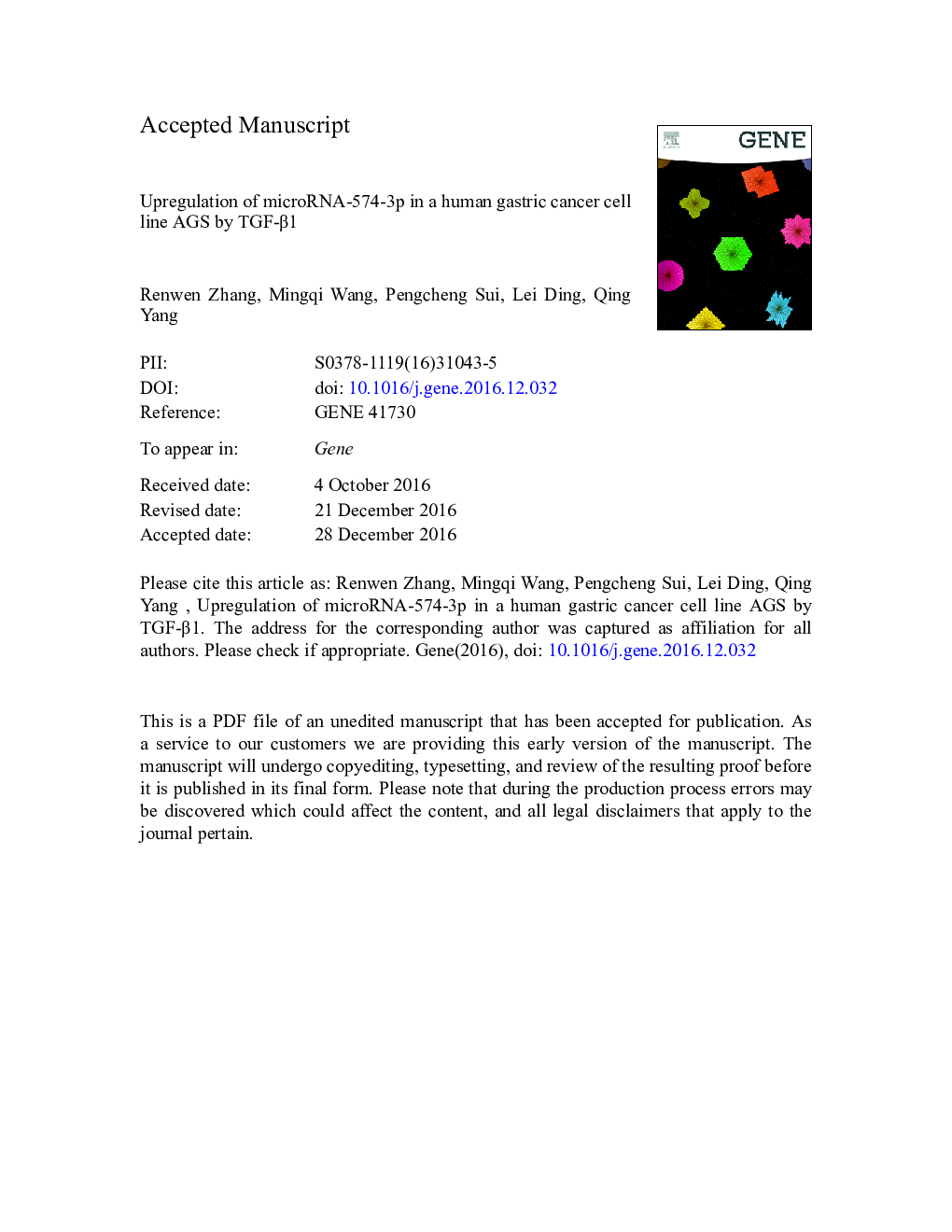| Article ID | Journal | Published Year | Pages | File Type |
|---|---|---|---|---|
| 5589784 | Gene | 2017 | 29 Pages |
Abstract
The mechanisms that regulate miR-574-3p expression in cells remain elusive. In the present study, we used real-time PCR assay to demonstrate TGF-β1-induced miR-574-3p upregulation in AGS cells, which was inhibited by TGF-β receptor I inhibitor SB431542. We used a computer search to identify Smad binding sites upstream of the miR-574-3p precursor sequence. We demonstrated that silencing Smad4, but not Smad2 or Smad3, significantly inhibited the TGF-β1-induced miR-574-3p upregulation in AGS cells. Furthermore, TGF-β1 significantly increased the activity of a dual-luciferase reporter that contains the Smad binding sites upstream of the miR-574 precursor sequence. Silencing Smad4 significantly inhibited the TGF-β1-induced increase in the activity of the reporter in AGS cells. ChIP assay showed that Smad4 directly bound to the promoter of miR-574-3p. MiR-574-3p inhibition was effective in eliminating the inhibition of AGS cell proliferation induced by TGF-β1, suggesting that TGF-β1 inducing upregulation of miR-574-3p is functionally significant.
Keywords
CDKtris-buffered saline containing tween-20precursor miRNAspri-miRNAsALK5SMADccRCCmiRNA-induced silencing complexTBSTDEPCMSCsPVDFTGF-β13′-UTR3′-untranslated regionBSADMSOMTTbovine serum albuminTransforming growth factor-β1Epithelial-mesenchymal transformationProliferationEMTpolyvinylidene difluoridediethylpyrocarbonateDimethyl sulfoxideMesenchymal stem cellsMicroRNAMiRNApre-miRNAsoptical densitynegative controlcyclin-dependent kinase
Related Topics
Life Sciences
Biochemistry, Genetics and Molecular Biology
Genetics
Authors
Renwen Zhang, Mingqi Wang, Pengcheng Sui, Lei Ding, Qing Yang,
